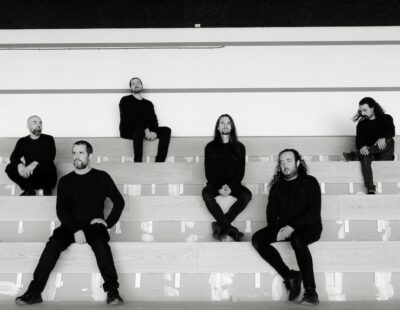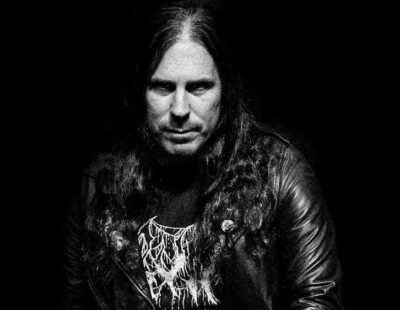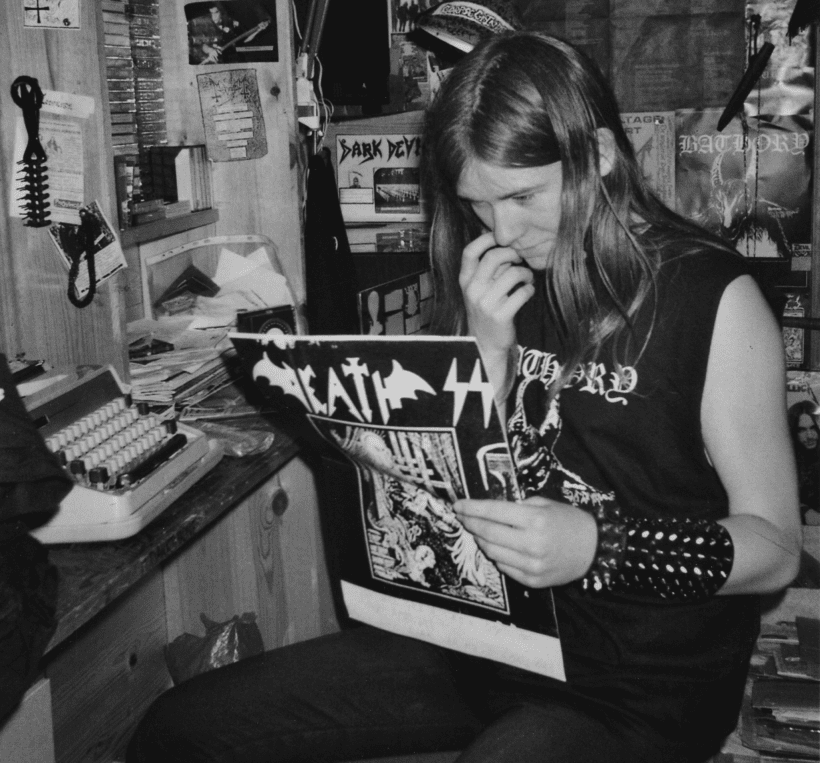
It’s been a few years since we’ve checked in with Havard Ellefsen, aka Mortiis—arguably the father of the entire dungeon synth genre. So, when it landed in my mailbox that Cult Never Dies was doing an anthology of Ellefsen’s Z.A.S.T. zine from the early ’90s it seemed like a good time to catch up with the man whom has continued to stay busy regardless of the pandemic state of the world.
“Well, at first we all thought it would last a couple of months,” he begins. “Then we started looking at all kinds of problems with everything from cancelled tours, to records and re-pressings and merch and—you name it—being brutally delayed. I spent most of 2020 just doing damage control and making sure a lot of webstore customers weren’t going to lose their minds. We had some real problems with pre-ordered vinyl, even a cancelled live album based on some old contractual misunderstanding, so I spent a lot of time, a lot of energy doing damage control for most of 2020, and into 2021. On a positive note, I got back into the studio pretty quickly, and have been working on a lot of new music ever since. It’s been a case of having a leg in at least two camps, albums wise. So, there’s at least two albums in the making right now. There’s still a lot of work to be done on both, but I’m making progress constantly.”
And the aforementioned Z.A.S.T.? It stands for “Zombie Anal Sex Terror” and ran for two issues between 1990 and 1992. While somewhat primitive it’s a vibrant reminder of the early days of the death and black metal underground, an exciting and frankly magical time that we’ll never see again. “Well mainly I just wanted to do more than just be a fan by that point. “Ellefsen replies when asked about the genesis of the zine. “I guess I started feeling like I wanted to be a part of the underground around 1989 or so. Up ‘til then I had just been a fan, writing to some bands. I started out writing bands like Sepultura, Napalm Death, Morbid Angel, etc., but I never heard back!” he laughs. “I remember I had seen the two issues of Damage Inc. at an older friend’s house, and discovered Mayhem, Necrophagia, Mefisto, and so on. I wrote Mayhem and Euronymous wrote me back, so that was pretty awesome at the time. I think Carcass was the first band I sent questions to, and I think Jeff was the one who responded. That was for a small pamphlet/fanzine I was trying to put together, that never happened, I’m guessing around 1989 as well. By 1990 I made another attempt and got Z.A.S.T. off the ground eventually. I was writing for a decent amount of underground bands and zines by that point, had started some tape trading as well, so I was getting a lot of flyers, and I’d send letters to a lot of those addresses, so I was on my way! The letter from Euronymous kinda kick started it though, as it also included a lot of cool flyers, for bands like Masacre, Rotting Christ, Imperator, and so on, so I had a bunch of bands I started writing to. I didn’t play any instruments, nor could I sing, so the next best thing was to start a magazine.”

And now here we are, 30 odd years later. Why exhume this for further documentation? He explains “Dayal [Patterson, owner of Cult Never Dies] contacted me about re-releasing both issues as a book, and I thought it seemed like a cool idea, because why not? I have worked with Dayal before, and have known him for years, so I know he does quality stuff, and doesn’t fuck around, so that was a no brainer.”
“In terms of the contents,” he continues, “you have to remember I started the mag in early 1990 or so, and I was a huge fan of death, grind, and black metal at the time. There was no attitude, it was just being a fan of the music, spanning all those genres. The proper way to be a fan if you ask me. So, you know, both times my mag finally was printed and released, both issues had been at least a year in the making, each, and back in those days, a lot of shit would happen during the course of a couple of years.”
Quite the understatement when you think back to the several-year period between the end of the 1980s towards 1993-1994. Looking through the bands covered in both issues of Z.A.S.T. I found it a little surprising to see the amount of death and grind bands Ellefsen covered, as I was always under the (obviously incorrect) opinion that—unless it was something like Possessed—death metal was looked down upon in Norway—by the time the second issue was completed anyway. “Well, we had that period for a short time, and I think I’ve said it before, that looking back at that ‘anti-death metal’ attitude, just comes across as really fucking dumb, but it happened, I just can’t figure out exactly why. I think the main sort of ‘philosophy’ behind it was that death metal had become the result of those early image-heavy, that started out as what we looked upon as the progenitors of the black metal scene. We just thought it was a shame how a lot of those bands had moved away from that early sound and look, into something we thought was commercial and watered out. It doesn’t make a whole lot of sense looking back at it now, of course, and quite clearly it was just a case of being narrow minded, but that was the reality of it. The weird thing is, if you look at bands like Sodom, Celtic Frost, Slayer—even Bathory—they all evolved into something other than death metal, so why death metal got this bad rap from us, remains kind of a mystery to me. Probably part of it had to do with the way they dressed, or more like, didn’t dress. Stupid. I’m all about the visuals, to this day, but I’m not going to judge a record or band based on their clothes.”
When prodded about what he misses about those days Ellefsen thoughtfully replies “I guess the excitement of discovering new bands, getting letters—real ones—normally handwritten, or with a typewriter in the mail. Getting those demos and magazines I ordered months ago, because everything took ages back then!” he laughs. “The underground was a new universe unfolding, and just discovering all these new bands and fanzines, was a feeling I doubt I will ever get to experience again. I certainly miss that. I guess adulthood also takes some of the enthusiasm out of it, that sort of glee and excitement only younger people seem to be able to conjure up!”
Adulthood can be a killer of momentum and youthful ambition but that doesn’t seem to be the case for Havard, whose 2021 was possibly busier than anyone could have anticipated. “[I’m] mainly working on two albums at the moment, one is a collab with Stephan Groth from Apoptygma Berzerk that features Sarah Jezebel Deva and Laurie Ann Haus on vocals (with Ellefsen on vocals and other tasks), as well as a record that I suppose is more on a pure Mortiis album, currently sounding somewhere in between The Smell of Rain and The Great Deceiver. I have other music laying around, too, that sounds like some real dark hybrid shit, but I need to focus on this stuff first. I’m also contributing to an H.P. Lovecract themed comp album put out by the Italian label Black Widow. They wanted a five-minute piece, and I made a 16-minute one! I am working on that right now. We just started talking about putting the 16-minute full version out as its own release, but likely that won’t happen ‘til next year.”
Mortiis’ solo work isn’t the only musical aspect of this year for Ellefsen. There was also his surprising (and welcome) return to stage with his first band, Emperor, during their live stream earlier in the Spring. Donning his goblin costume Havard—and original drummer Bard “Faust” Eithun—joined Samoth and Ishahn for a few songs, including a killer cover of Bathory’s “Call from the Grave.” While I’m sure he’s tired of talking about it at this point I had to inquire how it felt to pick up Emperial bass duties after several decades off. “I thought it went pretty smooth. After we’d agreed to do the songs with me and Faust joining in Samoth and Ihsahn both sent videos where they played the songs, since I’d pretty much forgotten how the basslines went. Ihsahn even sent a Cubase project, with all the tracks separated, so I was able to really check out the way things were set up and rehearse to that. We live a few hours apart, so it was never an option to get together and rehearse, that all happened in isolation! We got together for a few hours to rehearse about two weeks before the show, which felt more like just shooting the shit and catching up after about 30 years of not playing together! Earlier on, on the day of the show, we ran through both songs a few times, and that was about it. I thought it went pretty well. I mean, I was a little worried what people might think, but it seemed to have gone down pretty well. It was especially cool to catch up properly with Ishahn and Faust, since I really hadn’t spoken much with any of those guys for a long time. I always kept in sporadic touch with Samoth, and we used to hang out all the time in the early 2000s, before I bought a house and moved to Fredrikstad around 2006.”
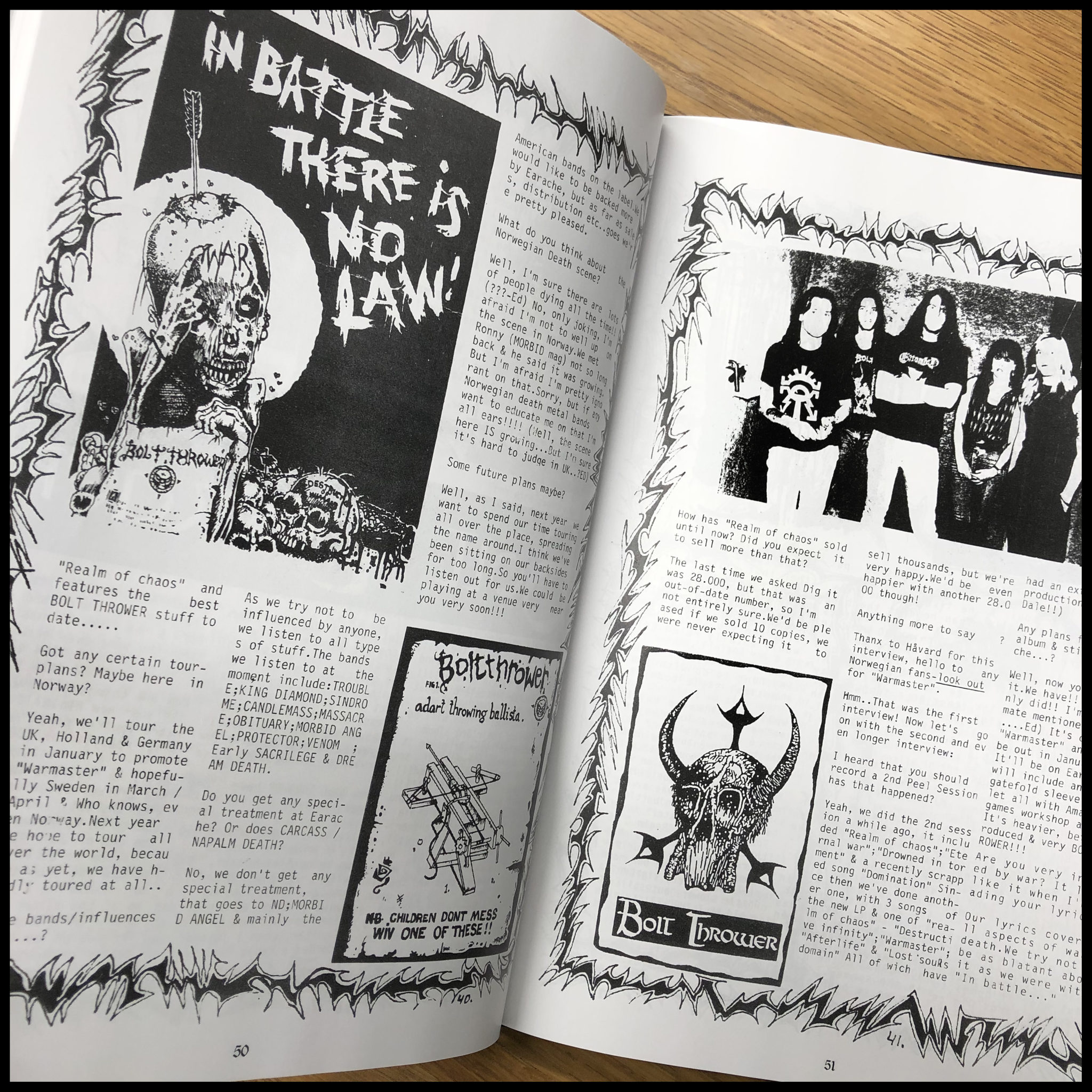
Despite the positive experience, Ellefsen dismisses this notion of starting another fully metal project. “I’m happy to do some appearances with Emperor, we already talked about doing something in the future, but beyond that, I really have no massive urge to go full metal! I mean I’d be happy to return to doing the kind of sort of crossover show that Mortiis as a band was, before we took an extended break from touring and live in general. I’m just happy where I am. I mean, never say never, I tend to do very left-field stuff with Mortiis, but I don’t see myself doing anything pure metal, as much as I love the genre, especially early ’80s era metal.”
Ok, so we’ve (kind of) taken that off the table for now. What about further writing? He’s obviously shown a passion for it for decades now. Could we expect a Mortiis memoir? “Would anyone care? I mean I guess my life has been somewhat more happening than the regular guy. But I’ve read all the books by the Nikki Sixx, the Duffs and Slashes, Keith Richards, Phil Collins and Elton John, etc. I mean fucking hell, I don’t have Elton John’s coke stories or Keith Richard falling asleep underneath a mixer, waking up to a room full of cops! I have some stories and it seems to never quite end, but I dunno…” he trails off. “Ask me in 10 years!”
Wrapping up our conversation I’d noticed that it seems over the last few years, between reissues and now this anthology, that preserving his piece of the culture of the past metal scene, and his own work in general, is very important to him. “I don’t know if there’s a whole lot of thought going into preservation, as opposed to just making sure my back catalogue gets treated fairly. Perhaps those two sort of blend together. I honestly don’t know, I just tend to be somewhat opportunistic I guess, not so much in a cynical money-grab kind of way, but I do like to make the best of any opportunities I get; be it being able to remaster old recordings, repackaging them, in ways that expand the Mortiis universe (the way I did with a lot of the Mortiis reissues, using David Thierree to re-create original artwork, as well as brand new artwork). Re-releasing the two Z.A.S.T. issues, was more an idea Dayal had first, that I thought was interesting. I am admittedly a supporter of being paid for efforts, especially efforts that are long overdue, such as a lot of my ’90s catalogue, that I earned more or less zero on back then. I don´t think there´s anything wrong with that, as long as you can still artistically stand behind the stuff you put out or reissue. I felt the same way about the Z.A.S.T. issues. I think they’re cool, I worked pretty hard at them way back then, and of course never made a dime from them.”
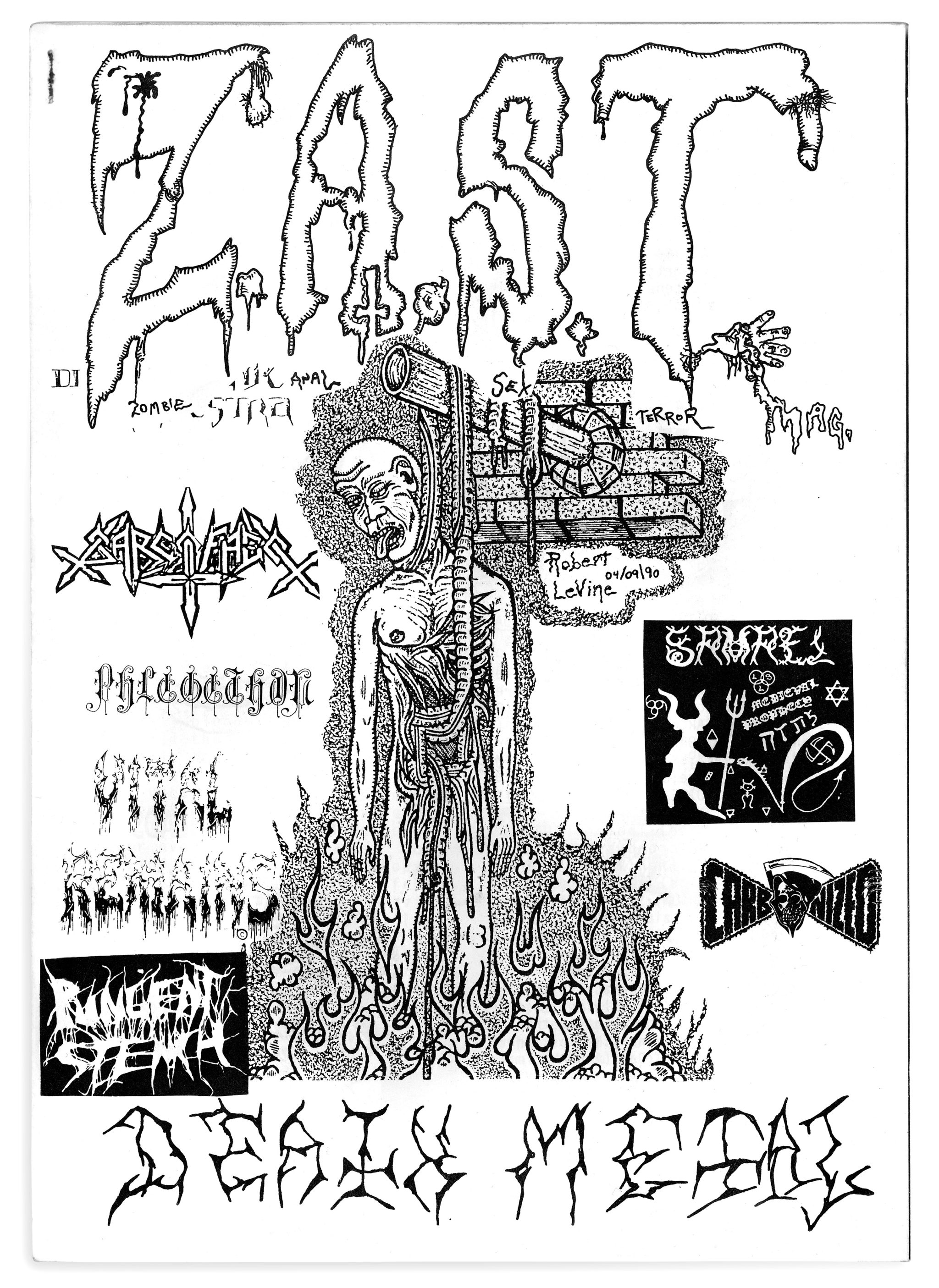
In a similar school of thought I asked him if he felt it was the responsibility of those involved in subcultures (be it music, art, literature etc.) to act as documentarians and/or preservers of the time they were present in? “No, I don’t think it’s my responsibility to document or enlighten people about anything from my times, but thankfully I am a pretty talkative person, and on a good day, I have no problem yapping on about it, but I don’t think I should be obligated to do so, I just happen to not mind doing it!” he laughs.
And so ends another round of spirited conversation with Mortiis. Cult Never Dies has released Z.A.S.T. Zine Anthology 1990-1992 on hardback and it includes an in-depth discussion with Ellefsen about the different bands and the process within. I would be remiss to neglect mentioning The Devil’s Elixirs Records is releasing, for the first time Mortiis’, The Shadow of the Tower, a once thought “lost” recording from 1997 on November 12.
“This is a recording from 1997,” he says. “Originally used as background atmospheres for the rare and fairly far in-between live shows I was doing back then. I discovered this recording on a tape in the attic, some 23 years later. I thought it would be an interesting piece of sonic history to get out there.”
The past stays alive and the future stays moving thanks to the efforts of people such as Mortiis. I’m sure we’ll meet here again down the road.
Order Z.A.S.T. Zine Anthology 1990-1992 from Cult Never Dies here.






